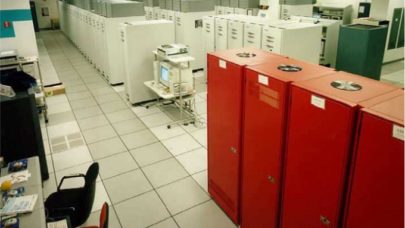
Reflecting on the 25th Anniversary of ASCI Red and Continuing Themes for Our Heterogenous Future
April 26, 2022
In the third of a series of guest posts on heterogeneous computing, James Reinders shares experiences surrounding the creation of ASCI Red and ties that system' Read more…

“Hazel Hen” Cray Supercomputer in Stuttgart Delivers 7.42 PFlops
October 9, 2015
The High Performance Computing Center Stuttgart (HLRS), member of the Gauss Centre for Supercomputing, today reported completion of the second upgrade of its su Read more…

The Necessary Marriage of Big Data with Exascale
June 29, 2015
Failure to incorporate big data computing insights into efforts to achieve exascale computing would be a critical mistake argue Daniel Reed and Jack Dongarra in Read more…

Tracking the Trajectory to Exascale and Beyond
June 8, 2015
The future of high performance computing is now being defined both in how it will be achieved and in the ways in which it will impact diverse fields in science Read more…

India Greenlights $730 Million Supercomputing Grid
March 26, 2015
The Indian government has approved a seven-year supercomputing program worth $730 million (Rs. 4,500-crore) intended to restore the nation's status as a world- Read more…

Is China Set to Unveil Record-Shattering Supercomputer?
May 28, 2013
When so many folks from the HPC community come at us with credible details about something as important as the next top system on the planet, it's hard to ignore. To quiet things down (and hopefully bring forth more information) we've published the consistent details about what we know from (very) credible sources.about this year's upcoming Top500 announcement. While unconfimed, we have.... Read more…

Blue Waters: Security at Scale
May 3, 2013
For the largest computer systems in the world, keeping IT assets safe presents a unique set of challenges. Read more…

Debugging at Titan Scale
April 15, 2013
Getting scientific applications to scale across Titan's 300,000 compute cores means there will be bugs. Finding those bugs is where Allinea DDT comes in. Read more…

- Click Here for More Headlines

Whitepaper
Transforming Industrial and Automotive Manufacturing
In this era, expansion in digital infrastructure capacity is inevitable. Parallel to this, climate change consciousness is also rising, making sustainability a mandatory part of the organization’s functioning. As computing workloads such as AI and HPC continue to surge, so does the energy consumption, posing environmental woes. IT departments within organizations have a crucial role in combating this challenge. They can significantly drive sustainable practices by influencing newer technologies and process adoption that aid in mitigating the effects of climate change.
While buying more sustainable IT solutions is an option, partnering with IT solutions providers, such and Lenovo and Intel, who are committed to sustainability and aiding customers in executing sustainability strategies is likely to be more impactful.
Learn how Lenovo and Intel, through their partnership, are strongly positioned to address this need with their innovations driving energy efficiency and environmental stewardship.
Download Now
Sponsored by Lenovo
Whitepaper
How Direct Liquid Cooling Improves Data Center Energy Efficiency
Data centers are experiencing increasing power consumption, space constraints and cooling demands due to the unprecedented computing power required by today’s chips and servers. HVAC cooling systems consume approximately 40% of a data center’s electricity. These systems traditionally use air conditioning, air handling and fans to cool the data center facility and IT equipment, ultimately resulting in high energy consumption and high carbon emissions. Data centers are moving to direct liquid cooled (DLC) systems to improve cooling efficiency thus lowering their PUE, operating expenses (OPEX) and carbon footprint.
This paper describes how CoolIT Systems (CoolIT) meets the need for improved energy efficiency in data centers and includes case studies that show how CoolIT’s DLC solutions improve energy efficiency, increase rack density, lower OPEX, and enable sustainability programs. CoolIT is the global market and innovation leader in scalable DLC solutions for the world’s most demanding computing environments. CoolIT’s end-to-end solutions meet the rising demand in cooling and the rising demand for energy efficiency.
Download Now
Sponsored by CoolIT
Advanced Scale Career Development & Workforce Enhancement Center
Featured Advanced Scale Jobs:
HPCwire Resource Library
HPCwire Product Showcase
© 2024 HPCwire. All Rights Reserved. A Tabor Communications Publication
HPCwire is a registered trademark of Tabor Communications, Inc. Use of this site is governed by our Terms of Use and Privacy Policy.
Reproduction in whole or in part in any form or medium without express written permission of Tabor Communications, Inc. is prohibited.
























